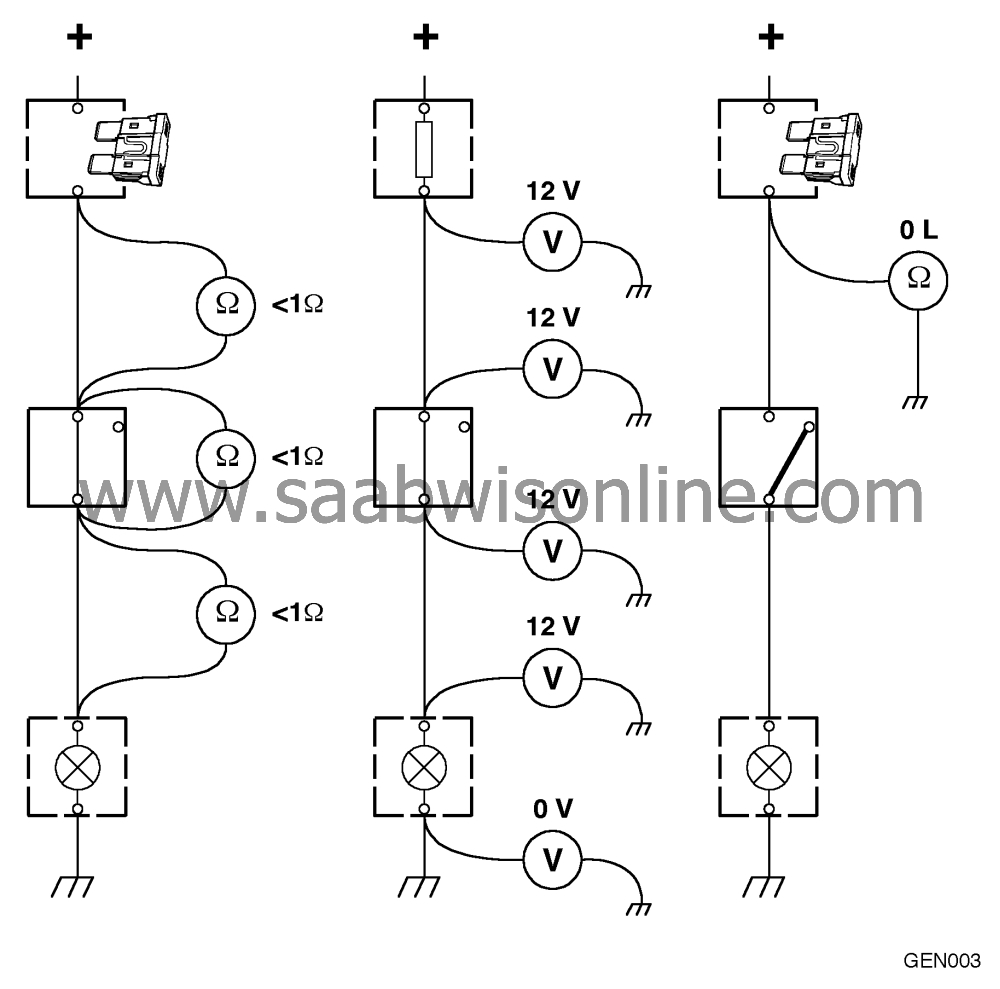Checking for open-circuit/ short-circuit
|
|
Checking for open-circuit/ short-circuit
|
|
Open-circuit (resistance measurement)
|
|
1.
|
Make sure that the component or cable to be checked is not live.
|
|
2.
|
With the instrument set for measuring resistance, connect the test leads to each end of the component or cable to be checked. The resistance of the wiring should normally be less than 1 ohm. The resistance of components should be as specified.
|
|
Open-circuit (voltage measurement)
|
|
1.
|
Connect the load (if any).
|
|
2.
|
With the instrument set for measuring voltage, connect the black test lead to a good ground and the red test lead to the wiring.
|
|
3.
|
At control module/switch outputs: take readings from them and move step by step towards the load. When no reading is obtained you have just passed the break.
|
|
4.
|
At control module/load inputs: take readings in the direction of the power source and move step by step towards the control module/load. When no reading is obtained you have just passed the break.
|
|
Shorting to ground (Resistance measurement)
|
|
1.
|
Make sure that the cable to be checked is not live and that the load, if any, is disconnected.
|
|
2.
|
With the instrument set for measuring resistance, connect one of the test leads to the load side of the cable and the other test lead to a good ground.
|
|
3.
|
Move the wiring carefully, checking at the same time that the instrument shows infinite resistance (OL).
|



